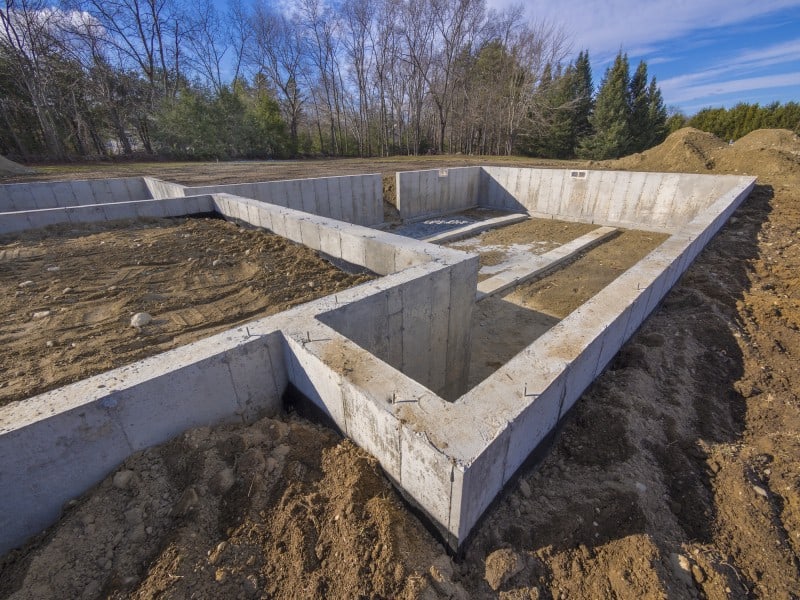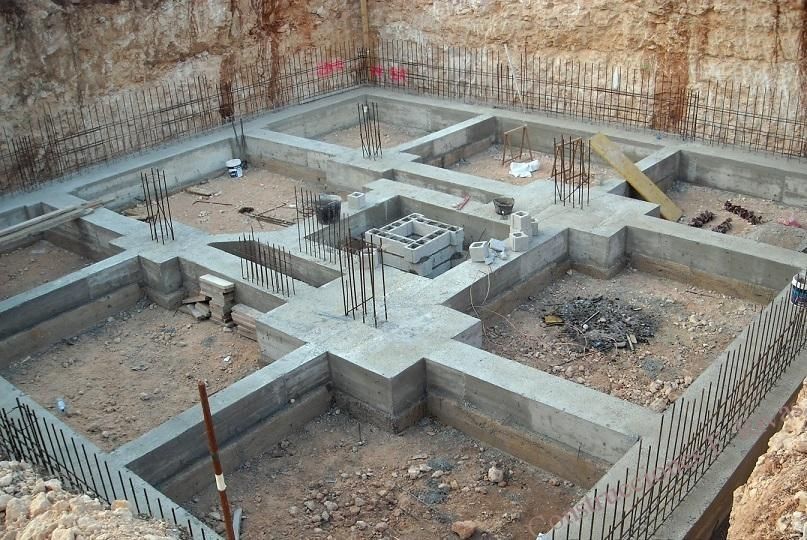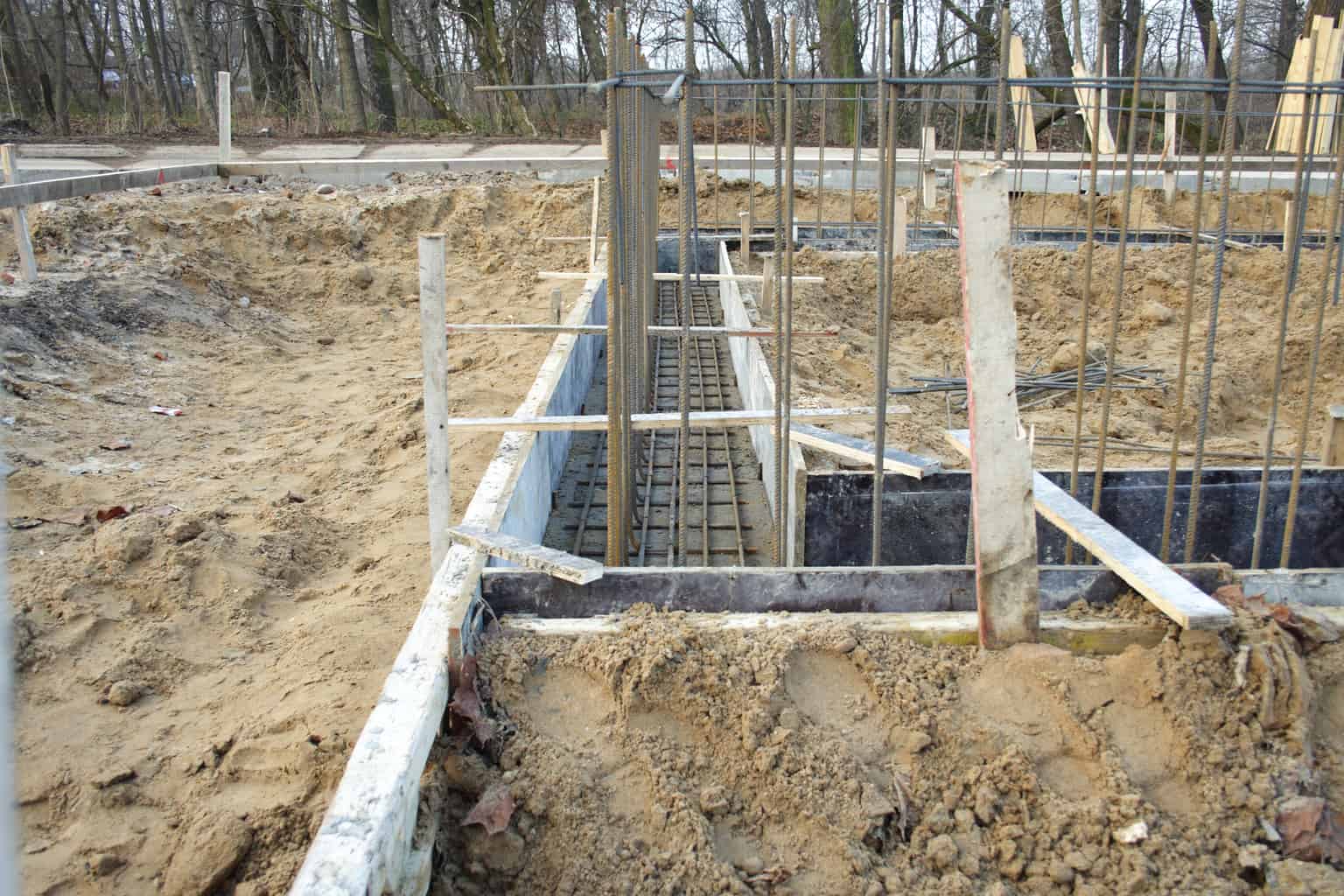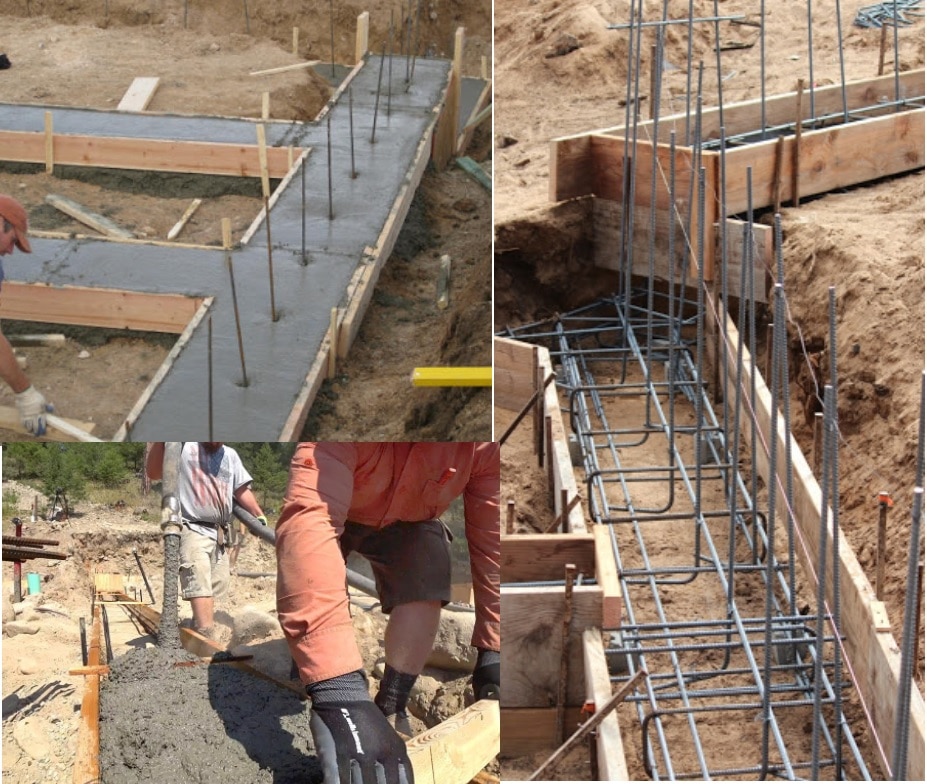
Residential Concrete Foundations Bartley Corp
1. Full Basement One of the most popular choices for a foundation is a full basement. This type of foundation typically uses concrete to create a base and tall walls that measure at least 8 feet in height. A basement foundation is usually mostly underground, providing a base for the home and extra living space for the residents .

Three Types of Footings to Support Foundation Walls Learn how soil conditions impact your choices around using concrete piers, poured-concrete footings, and slab foundations for spreading the weight of a structure. By Scott Gibson

Concrete Foundation Footings Fenton, MI Rock Foundations, LLC
Footings are the structural members which transmit the concentrated loads of the structure to the soil. These members come in various shapes and sizes and are generally constructed of steel-reinforced concrete. The footings are generally a minimum of two to three times wider than the width of the foundation wall.

7 Types of House Foundations for Your Dream Home with Pros & Cons
Under every house is a foundation, and under most foundations are footings. Most of the time we take footings for granted, and usually we can: For typical soils, a common 16- or 20-inch-wide footing can more than handle the relatively light weight of an ordinary house.

How to build a concrete footer kobo building
Steps To Lay a Foundation Understanding the foundation-laying process is crucial if you're planning to DIY it, and it may also help you understand why we recommend hiring a professional contractor. Below are the basic steps for laying a foundation. Obtain Permits and Materials

Concrete Block Foundation Advantages and Disadvantages of Concrete Block Foundations
The Stepped footing it is a widely used type of footing in the Construction of House Foundation on the slope. During the construction of the foundation on the slope , it is very important that right decision should be taken by proper planning that whether the ground floor should be located at the highest level or at the ground level.

Three Types of Footings to Support Foundation Walls Metrocrete News
Dhaka (/ ˈ d ɑː k ə / DAH-kə or / ˈ d æ k ə / DAK-ə; Bengali: ঢাকা, romanized: Ḍhākā, IPA:), formerly known as Dacca, is the capital and largest city of Bangladesh.It is the ninth-largest and seventh-most densely populated city in the world. Dhaka is a megacity, and has a population of 10.2 million residents as of 2022, and a population of over 22.4 million residents in.

What Is a Footing in Construction? A Complete Guide
Under every house is a foundation, and under most are footings. Most of the time we take footings for granted, and usually we can: For typical soils, a common 16- or 20-inch-wide footing can more than handle the relatively light weight of an ordinary house. Upside down "T" shape Stepped footing Stair-like design spreads out load
:max_bytes(150000):strip_icc()/concrete-slab-for-a-new-home-175526089-58a5cdbc5f9b58a3c9afa82b.jpg)
House Foundation Types, Uses, and Pros and Cons
What is the Main Purpose of a Foundation? A proper foundation does more than just hold a house above ground. Building foundations also keep out moisture, insulates against the cold, and resists movement of the earth around it. Oh, and one more thing: It should last forever.

Footings are the next step in our How to Build a Home Blog Series. Armchair Builder Blog
A footing is a part of the foundation construction for a building, creating an attachment point between the foundation and the soil. Footings consist of concrete material placed into a trench. The role of a footing is to support a building and help prevent settling.

3 Common Types of Building Foundations Brown Concrete and Backhoe
Concrete slab or slab-on-grade foundations are solid concrete foundations that rest on the ground and usually have mesh or rebar reinforcement. They are usually 4-6 inches thick and are more effective on level ground or minimal slope. Concrete slab foundations are the least expensive of the house foundation types, ranging from $4,500-$21,000.

A Guide to Concrete Footings Rock Foundations
The Right Footings for Strong Foundations - Fine Homebuilding Fine Homebuilding Project Guides Foundations and Masonry Work Guide Home Chapter How-To The Right Footings for Strong Foundations Understand the options, design requirements, and common pitfalls to spec the best footings for your project. By Tony Dumais Issue 316 - July 2023

Week 1 How to form and pour foundation footings • The Vanderveen House
Slab Foundation. This is the simplest, most budget-friendly, and most common type of house foundation. This foundation is a slab of concrete around 6 to 8 inches thick poured directly onto a soil surface prepared with gravel to facilitate drainage. There are several ways to build a slab foundation. Slab on grade - To construct this foundation.

How to Construct Footing for Residential Buildings with Maximum Two storeys? The Constructor
1 Types of Foundations The foundation ensures that a house stays where it's supposed to be. There are three general types of foundations. Wide regional differences in foundations can be explained by climate. In New England, most homes have basements, while warmer locations in the South are likely to have crawl spaces or slab foundations.
/Footing-foundation-GettyImages-600579701-58a47c9b5f9b58819c9c9ff6.jpg)
Guide to Foundation Footings Building Code
House Foundation Types The most common types of foundation are: Concrete slab Crawlspace Basement Pile (raised) No type of foundation is better than another. Each type has advantages and disadvantages.

Common Types Of Home Foundations Southdown Homes
Shallow foundations are suitable up to a depth up to 1.5m and deep foundations extended up to hard strata below the ground surface having a depth of more than 1.5m.. A shallow foundation is constructed for a structure that has a horizontal spread more than a vertical height. A deep foundation is most suitable for high-rise buildings like a skyscraper or a castle built on very weak.